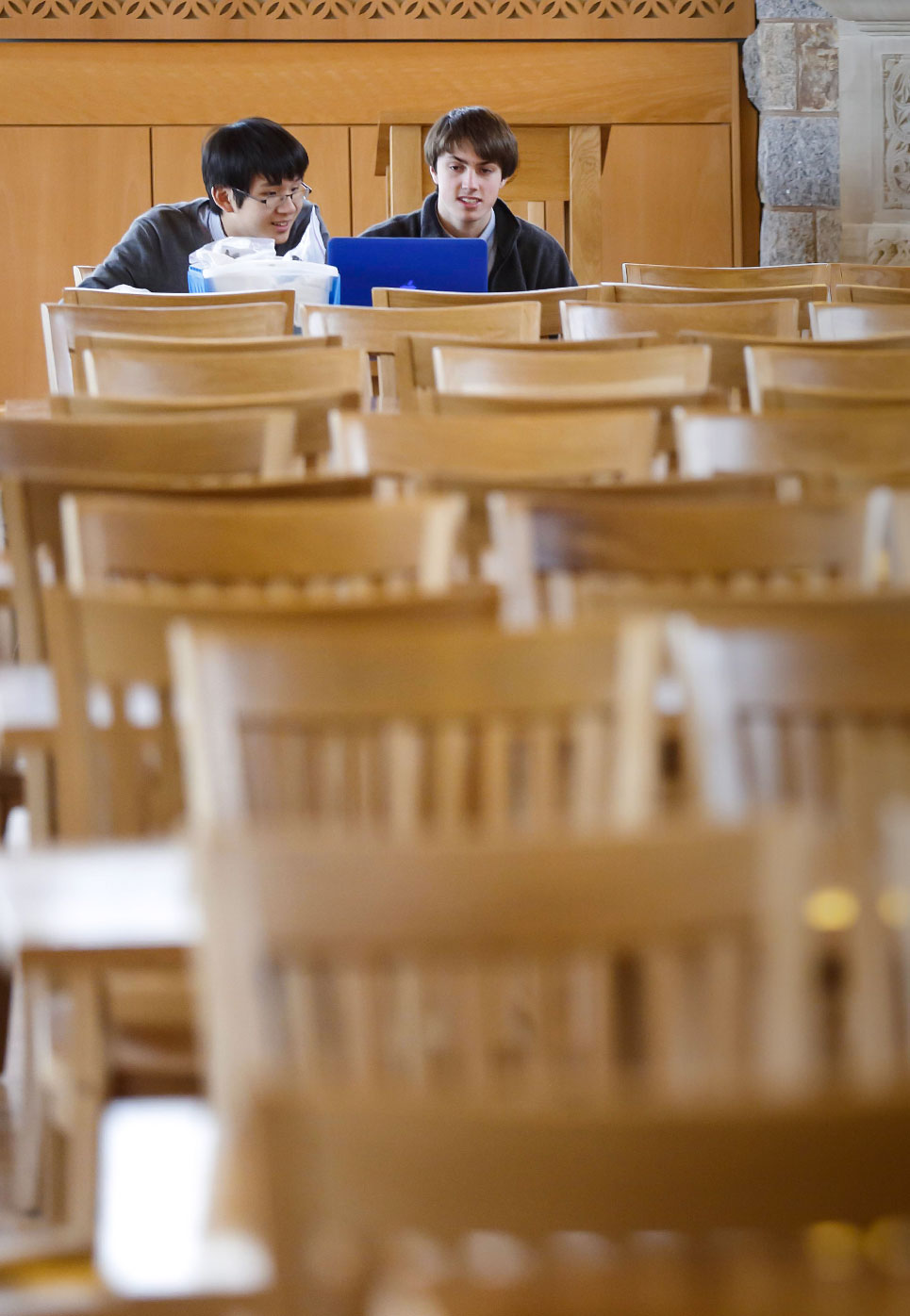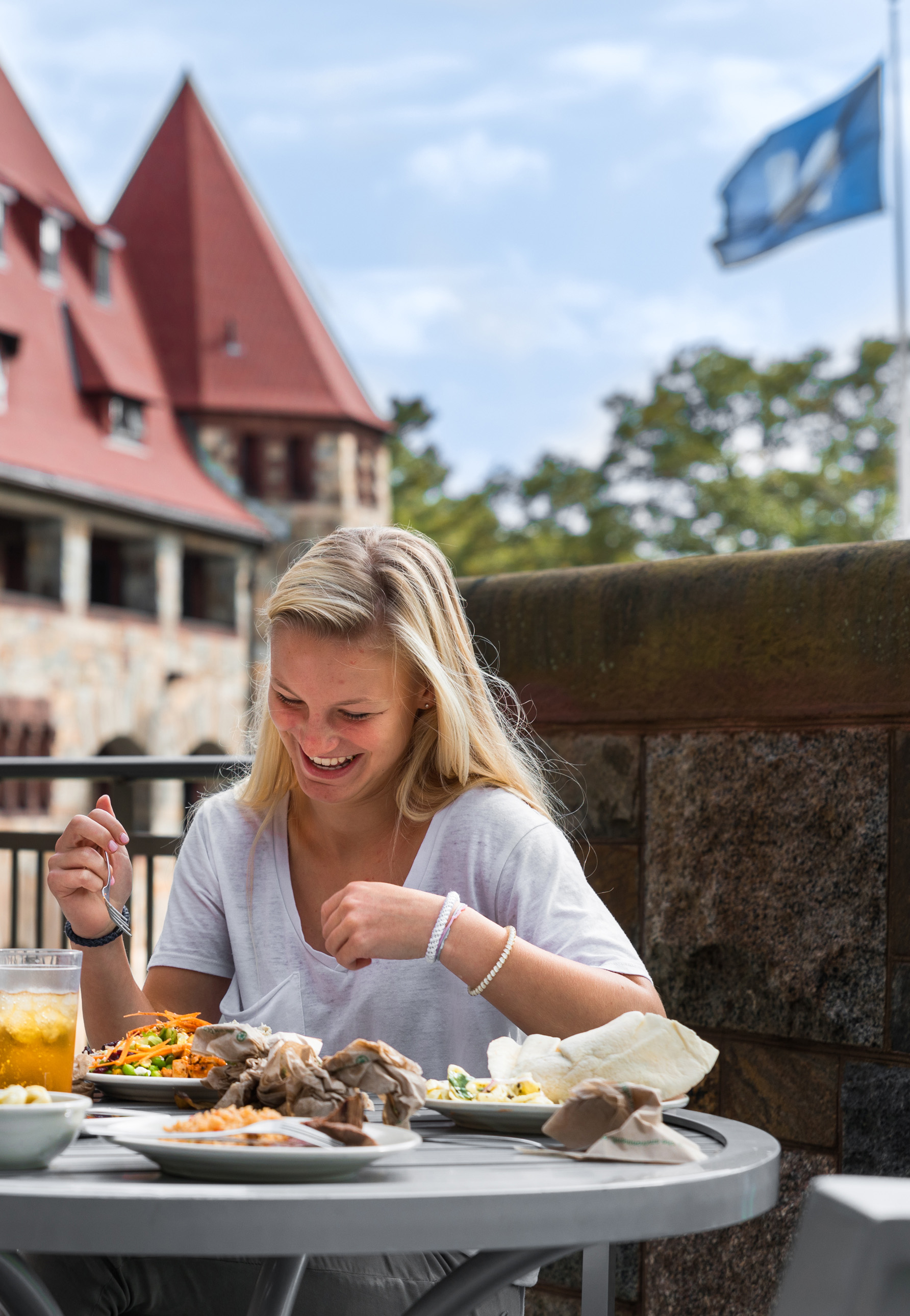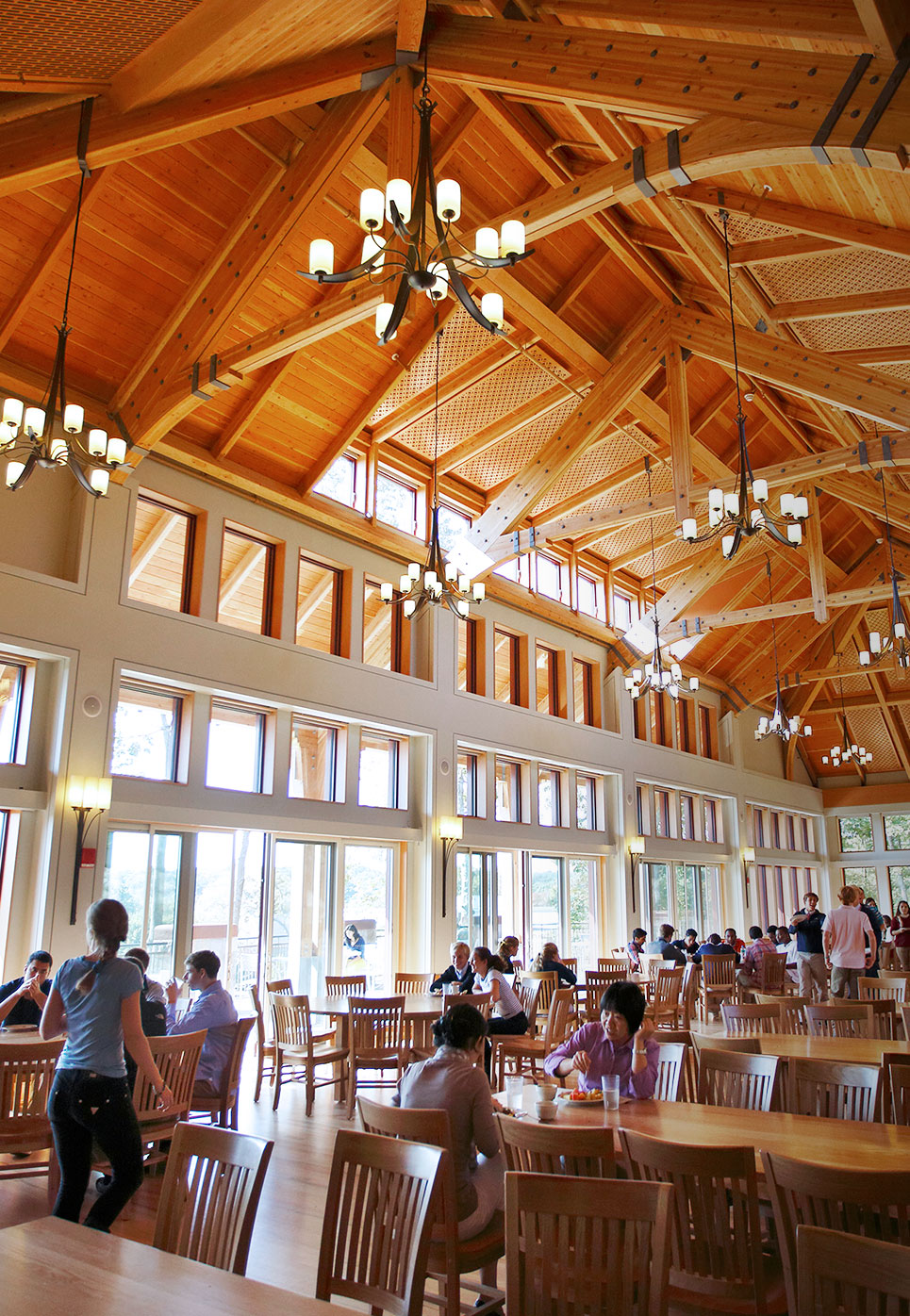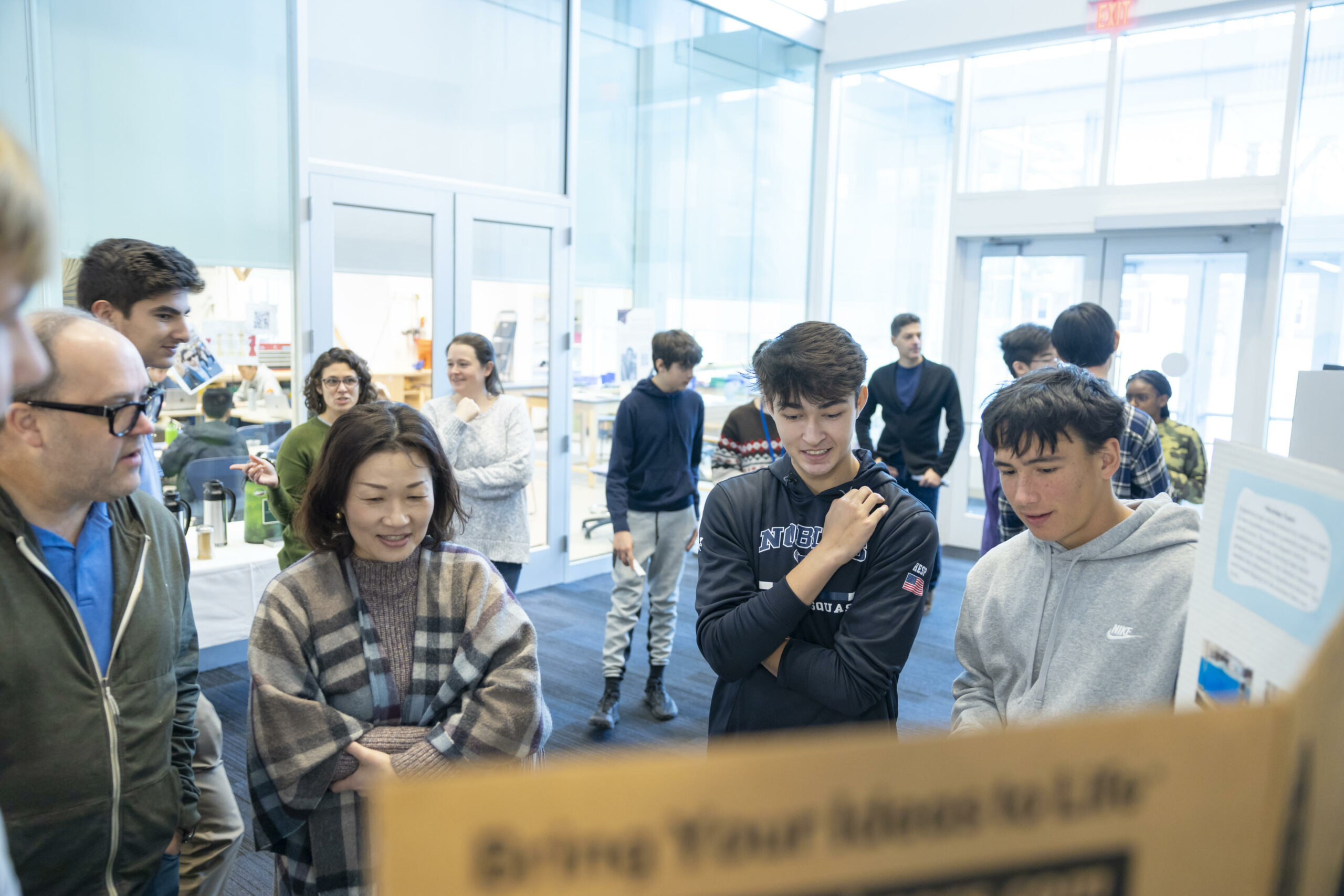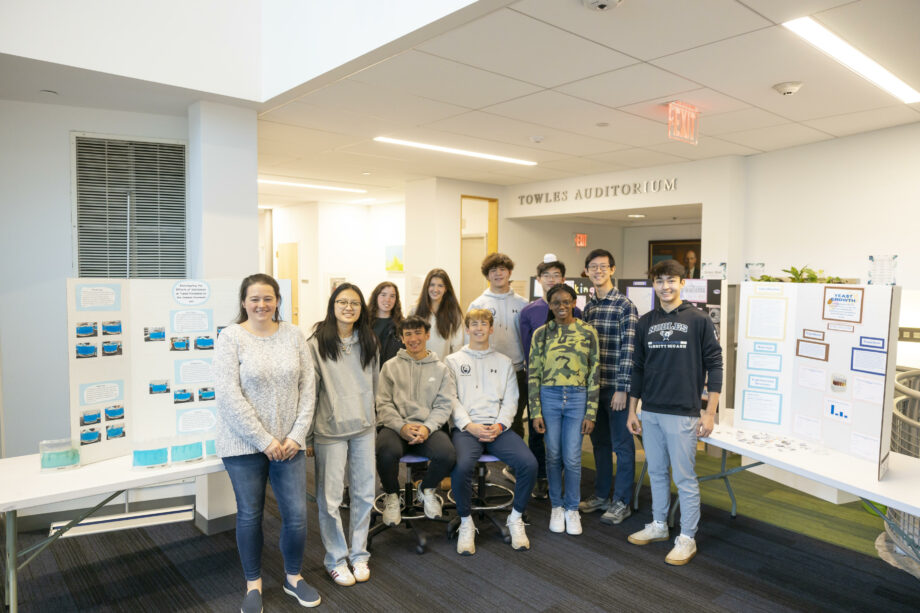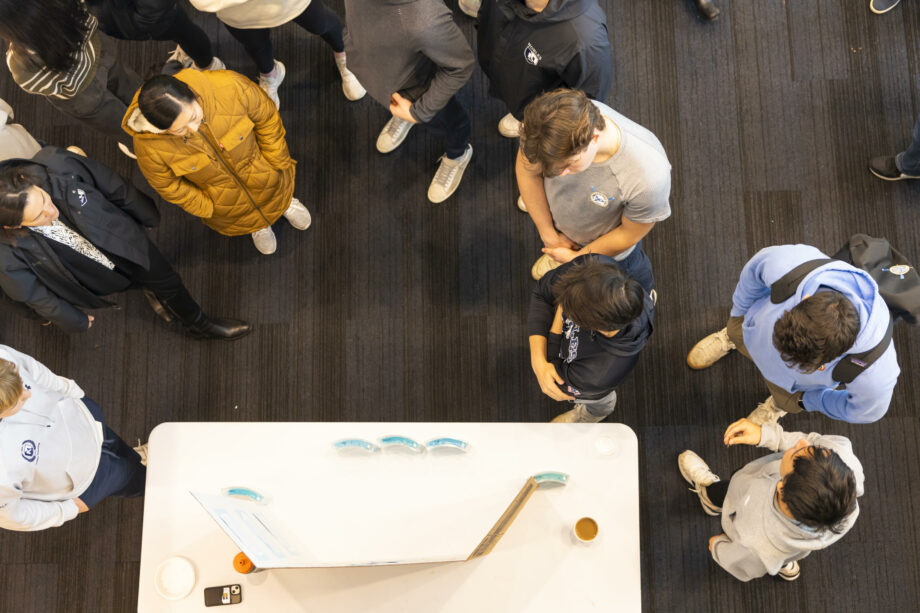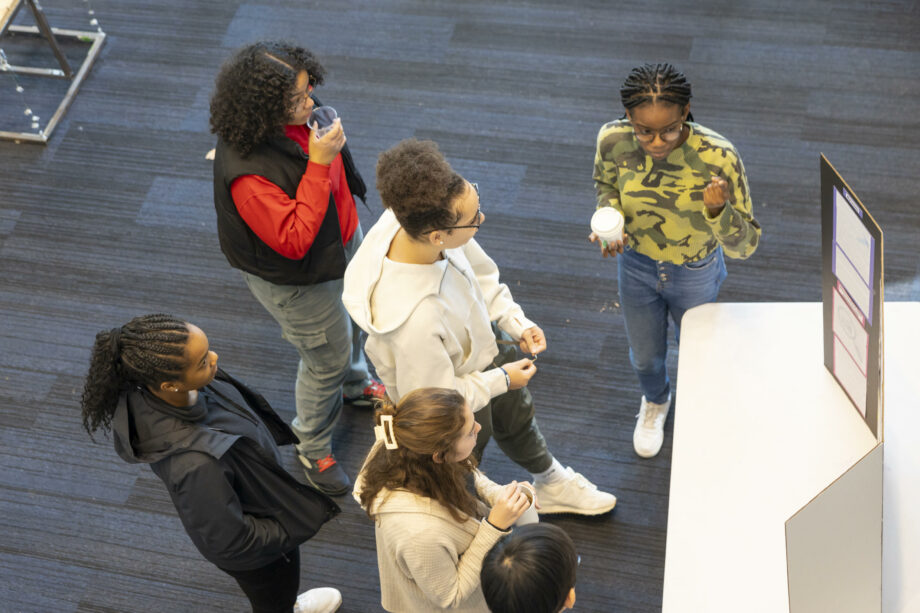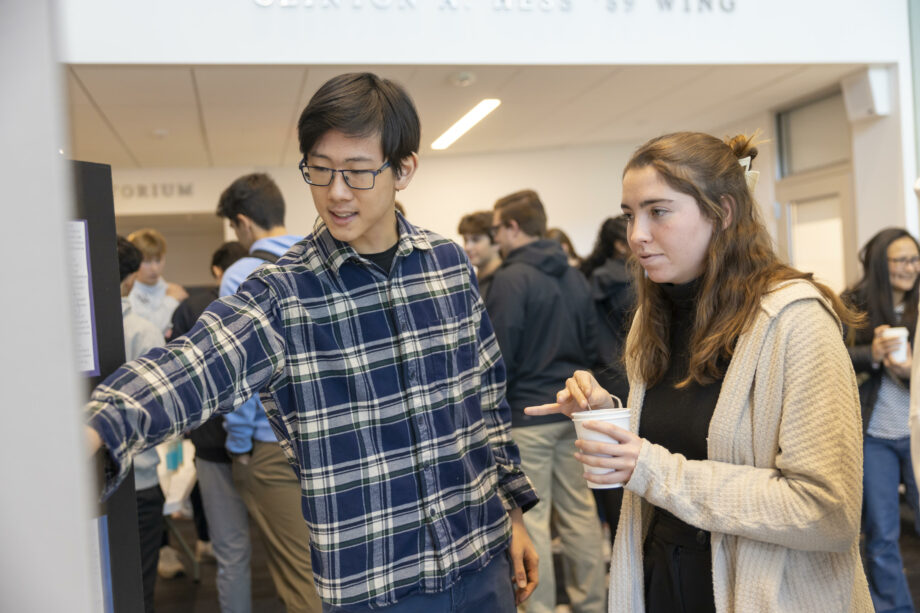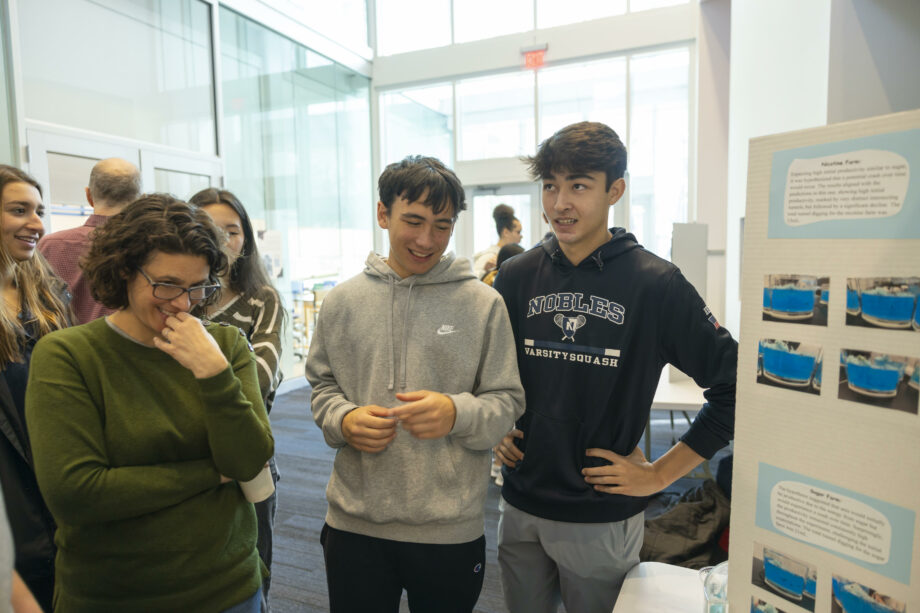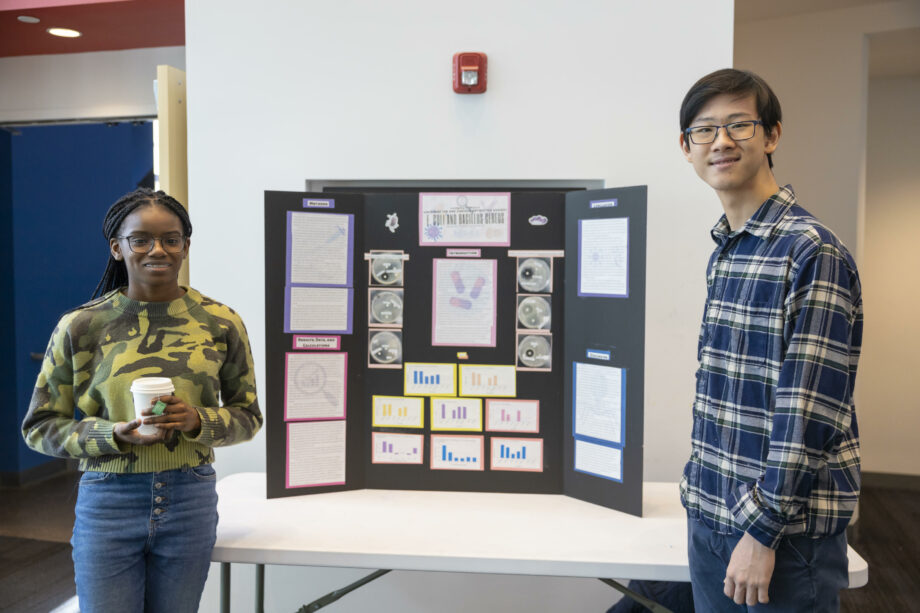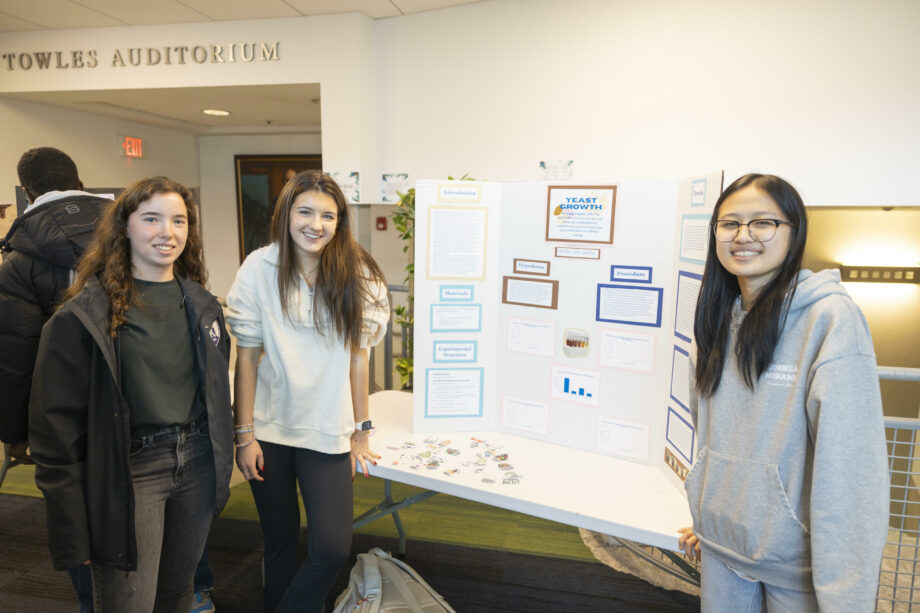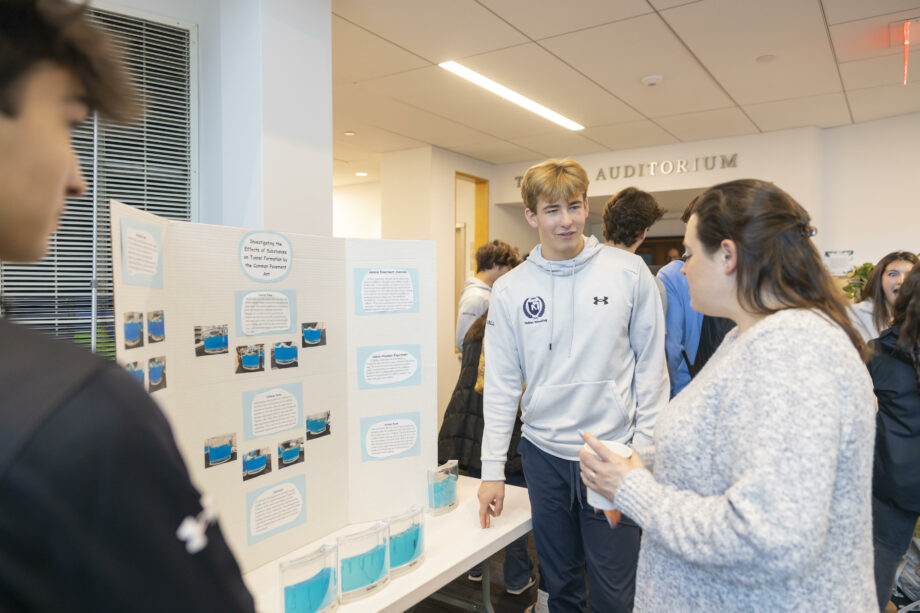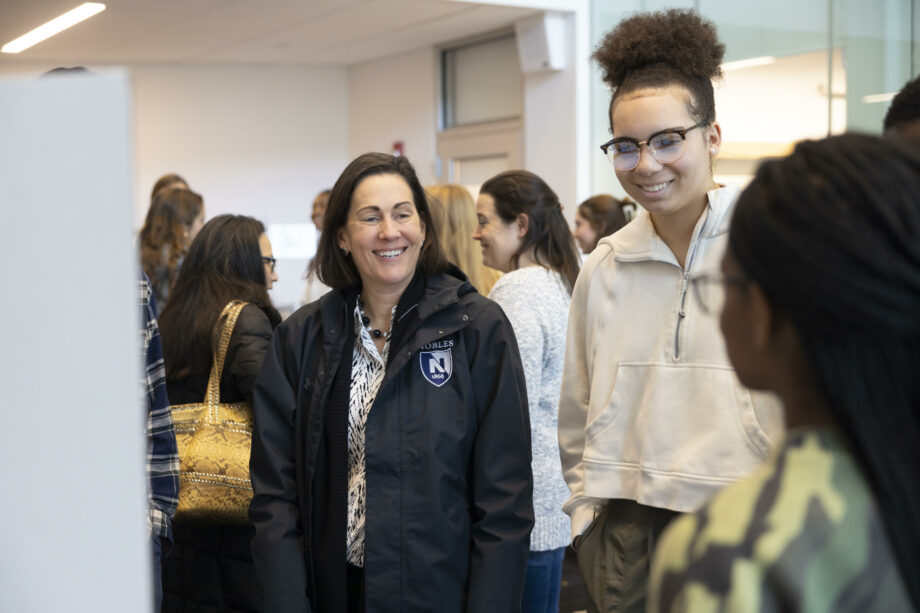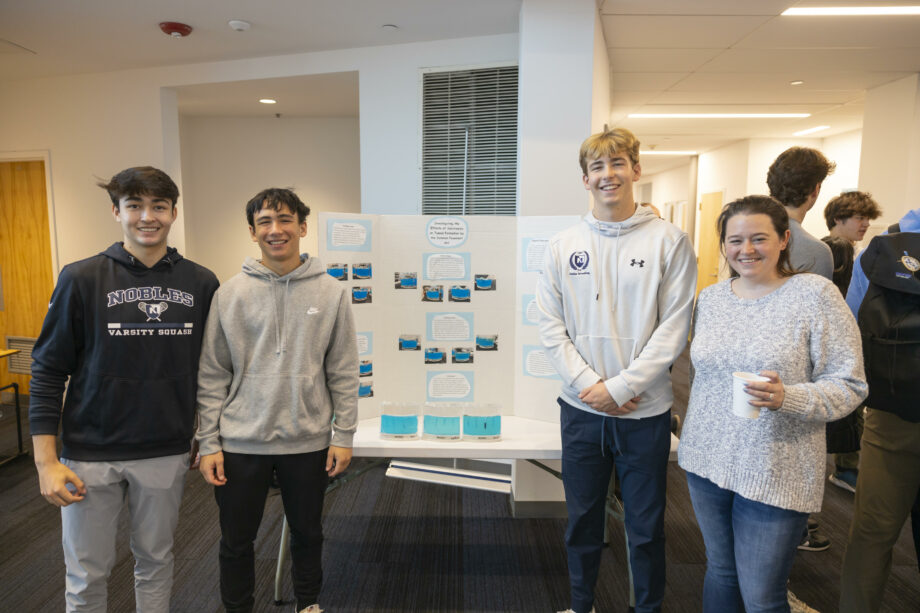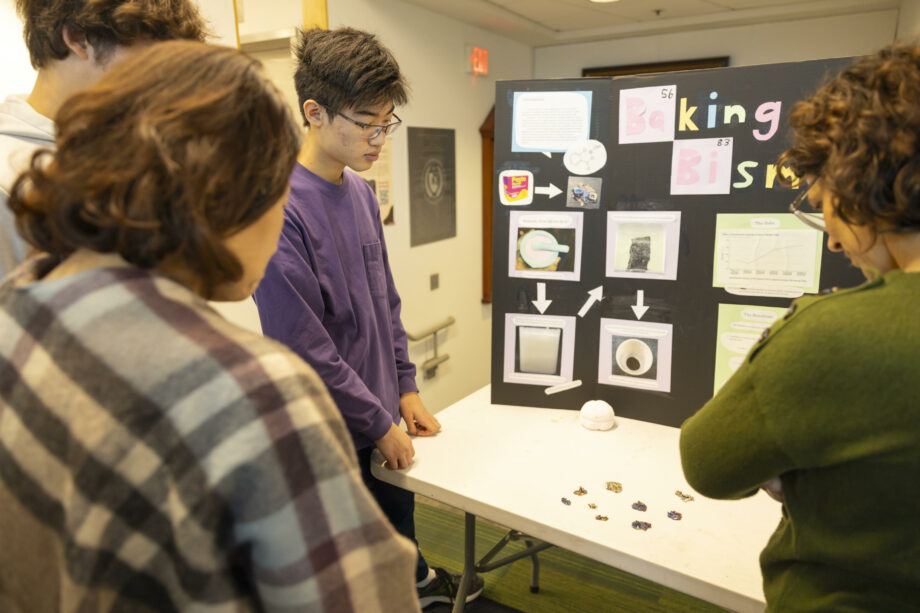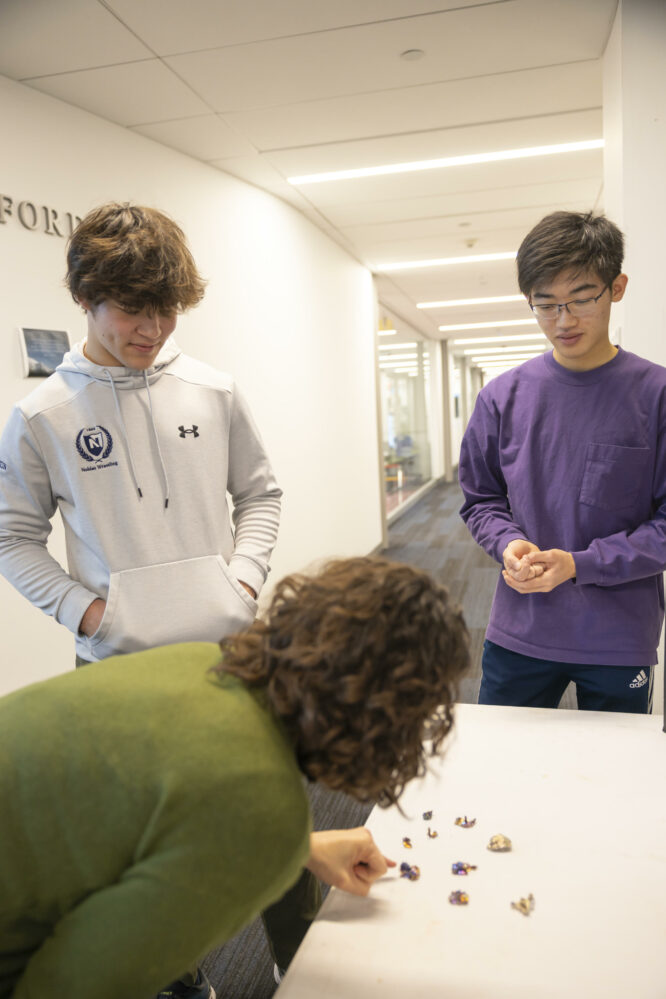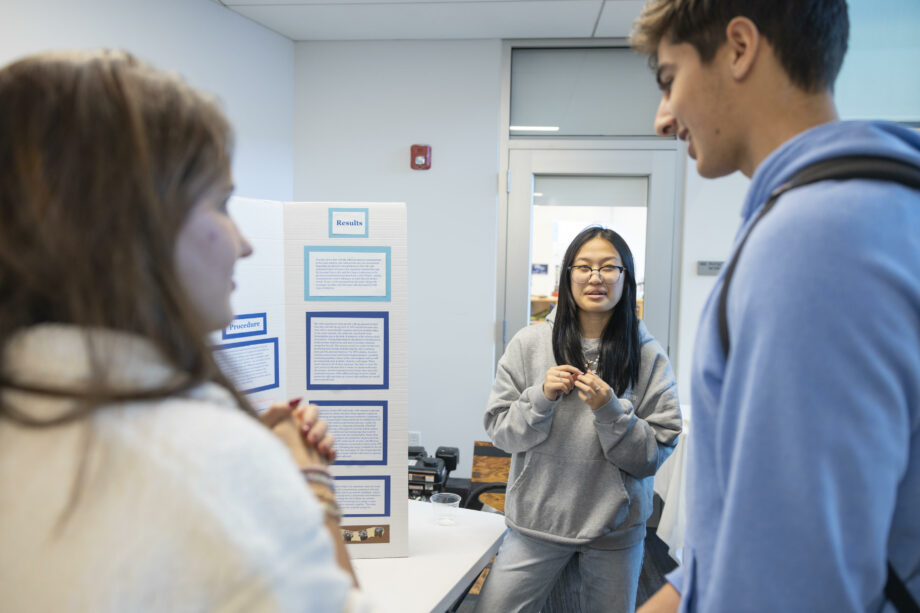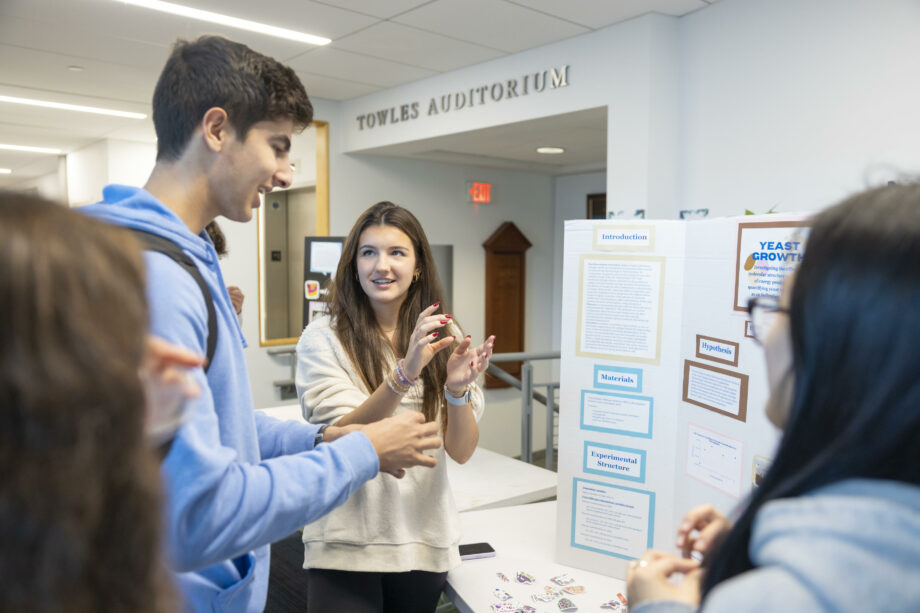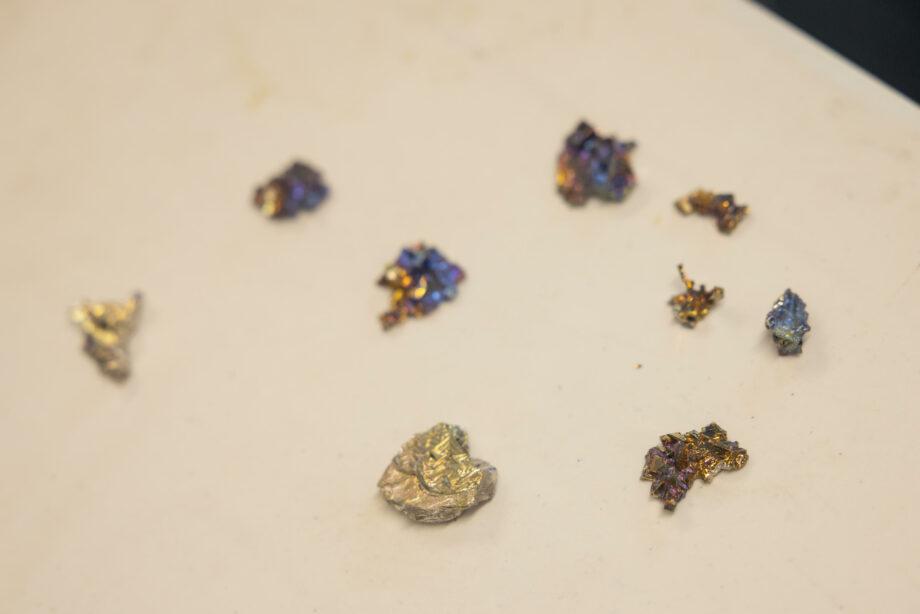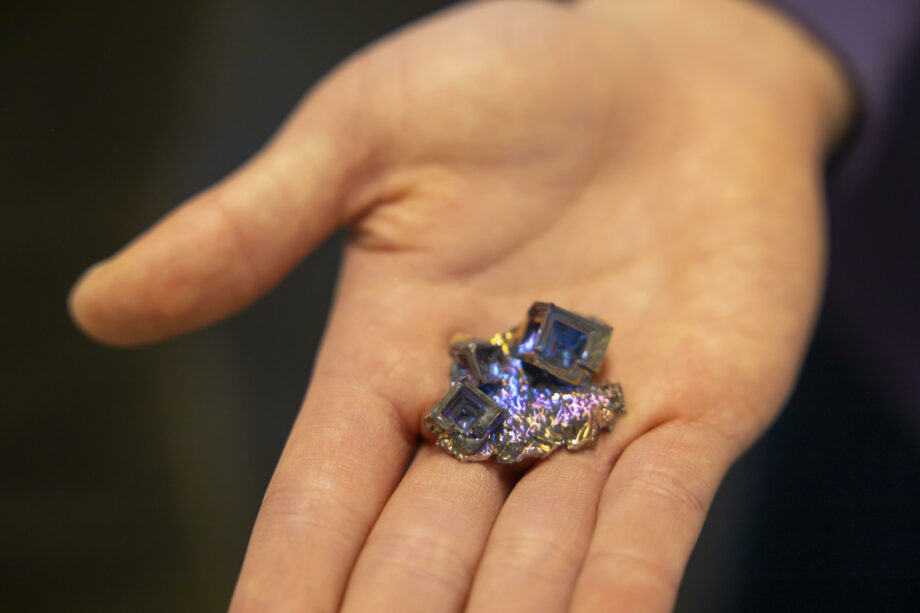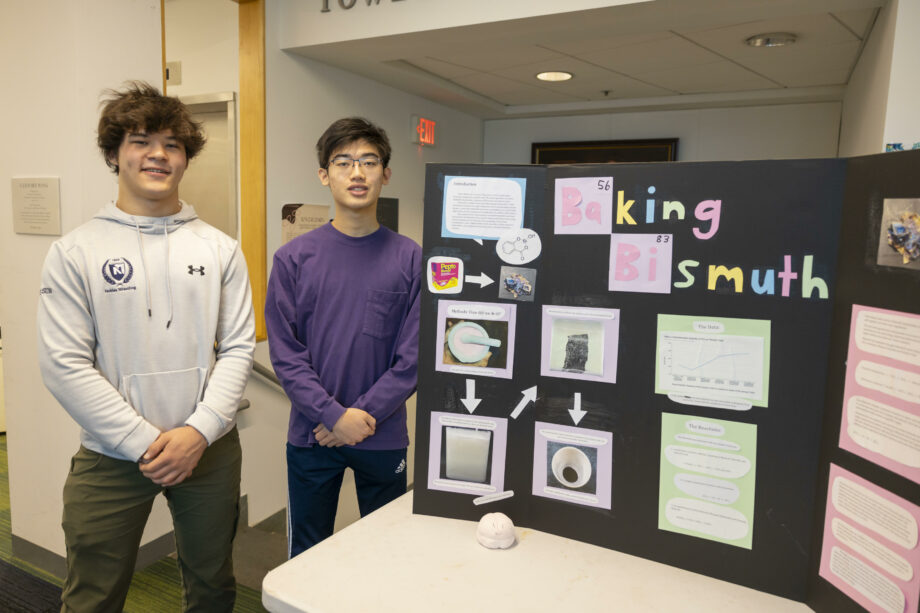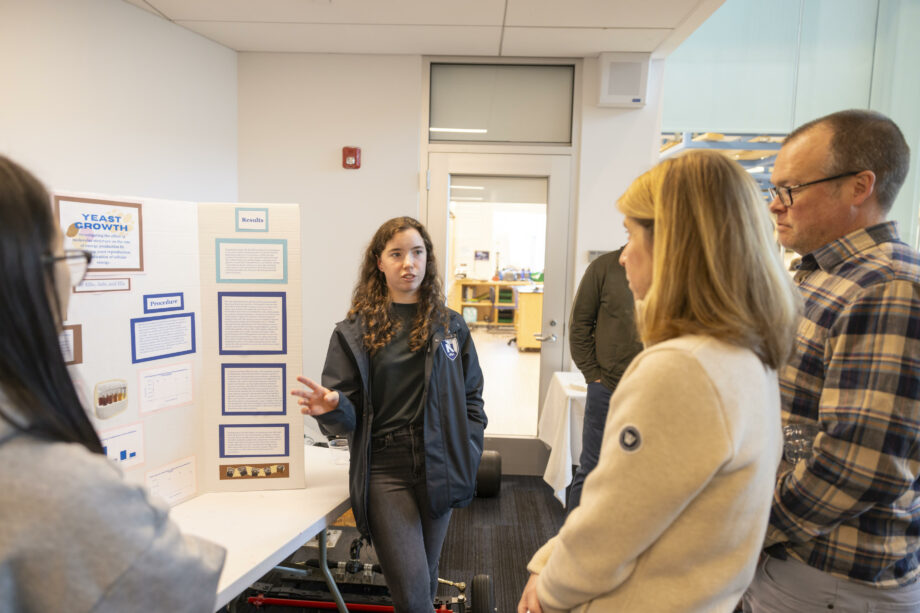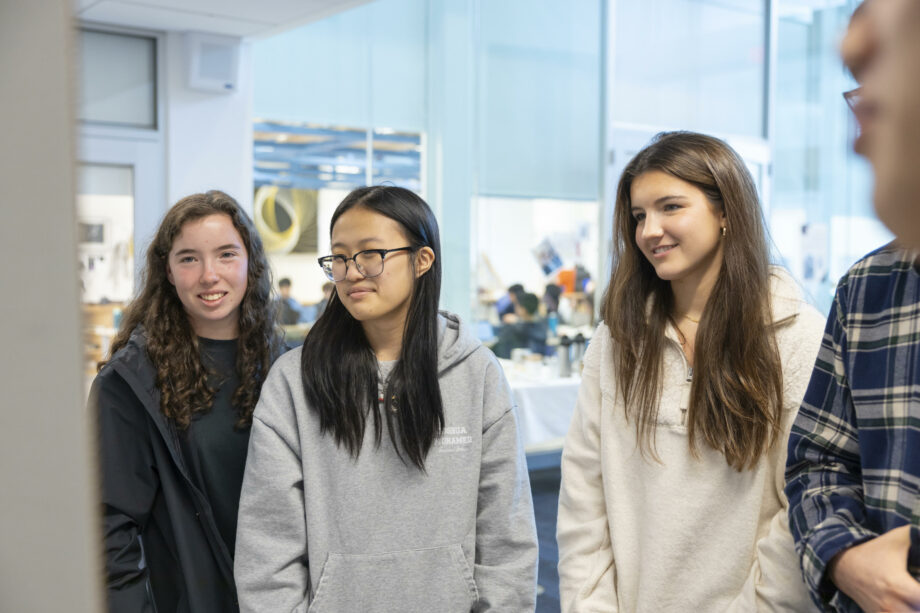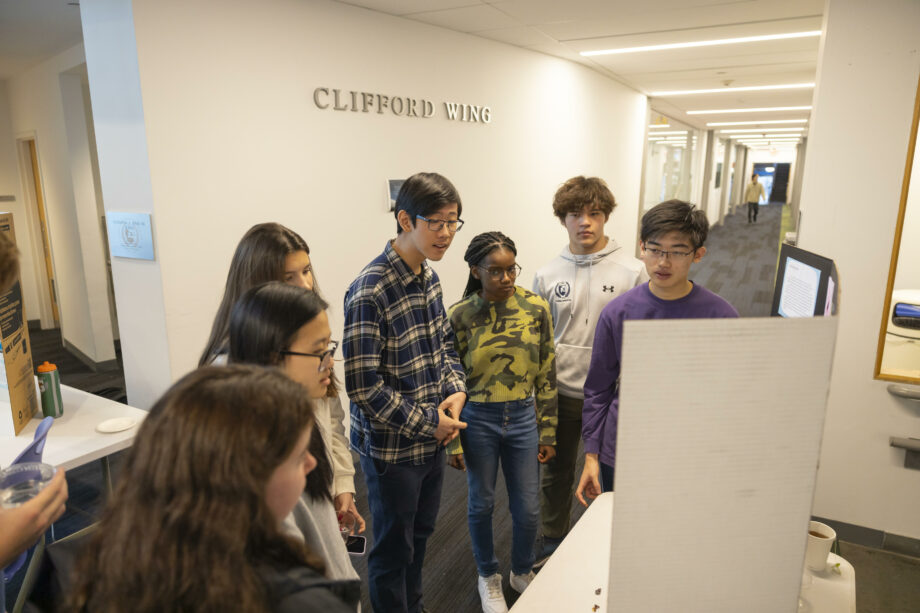Over the past several months, students in the biochemistry research class presented their projects to the school community, offering a space for students, faculty and staff to connect with the curriculum. There were four projects in total, covering a wide range of impressive topics that explored how antibiotics and viruses kill bacteria to how to purify bismuth and grow crystals of the element.
Biochemistry is an advanced, project-based course in which students learn how to conduct their own research projects. Students begin their projects by discussing fundamental research topics and strategies, and identifying the primary literature they will use to design their innovative research question and experimental approach. Beyond the research, students devote a significant amount of time working toward effectively communicating their findings.
“We focus on designing a research project and ordering supplies in September,” explains Dr. Burke. “The students need to work within a set budget and learn how to take care of whatever model organism they decide to work with. October and November are focused on conducting experiments, and then everything culminates in a poster session in December.” The poster sessions provide students with an experience similar to what they would experience at a research conference.
See below for detailed descriptions of the four projects.
Project 1:
Using a series of chemical reactions and purification techniques, two students isolated bismuth from bismuth subsalicylate, the active ingredient in Pepto-Bismol. They melted down bure bismuth and manipulated its cooling to generate different hopper crystals that look like inverted pyramids.
Project 2:
Another group investigated the effects of different antibiotics and viral infections on bacterial cell survival. Bacterial species can be divided into two categories, gram-positive and gram-negative, depending on their cell wall structure. There are classes of antibiotics that only work for one of the two groups. Additionally, depending on the mechanism of action for the antibiotic, cells will respond differently. These students also investigated how bacteriophages, viruses that specifically infect bacteria, can spread from cell to cell and limit bacterial growth.
Project 3:
A third group looked at how different food sources impact reproduction in yeast. Yeast will grow and divide as long as there is food and space. They also preferentially ferment even when oxygen is available (our muscle cells will ferment when low on oxygen, but we cannot survive on fermentation). This group looked at how challenging the yeast by giving them less-than-ideal food sources and manipulating osmotic pressure reduces their reproductive rate.
Project 4:
The last group investigated the effects of different substances on ant behavior. They worked with the common pavement ant and quantified tunnel building to see if common substances such as sugar, caffeine, alcohol, and nicotine would alter the ants’ productivity. They also performed choice assays, allowing the ants to pick between the substances to see what they prefer.

